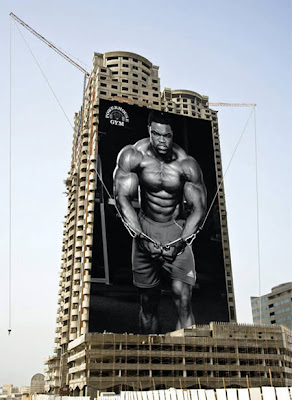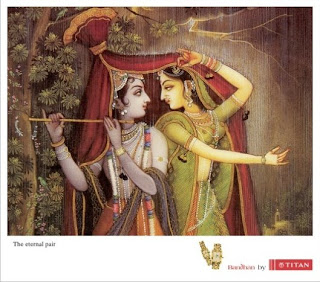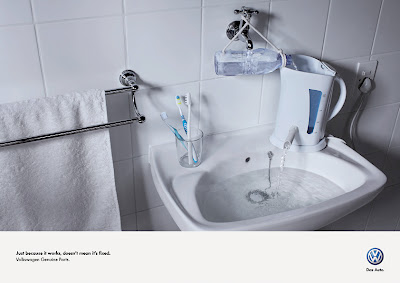First of all, I am sure most of the management people must have heard about this term. For the others let me describe it. Guerrilla Marketing is an advertising strategy that focuses on low-cost unconventional marketing tactics that yield maximum results. The term was inspired by guerrilla warfare which is a form of irregular warfare and relates to the small tactic strategies like ambushes, sabotage, raids and elements of surprise used by armed civilians. Much like guerrilla warfare, guerrilla marketing uses the same sort of tactics in the marketing industry. This alternative advertising style relies heavily on unconventional marketing strategy, high energy and imagination. It generally makes relatively higher amount of impression than traditional methods of marketing.
One of the main advantages of guerrilla marketing is that it’s unexpected. It catches us off guard and causes an emotional response: laughter, shock or sadness are great sellers. It’s easy to see why marketers would rather you didn’t know just how they’re using guerrilla marketing to their advantage. If you know their secrets, you may just stop responding.
The prevalent types of Guerrilla Marketing are;
- Viral marketing is a highly visible form of guerrilla marketing these days. A successful viral campaign uses existing communication networks (you tell two friends, they each tell two friends, and so on), doesn’t require much in terms of resources, and has the potential to be unstoppable.
- Ambient marketing allows a business to create brand recognition without necessarily pushing their products. It's about placing ads on unusual items or in unusual places you wouldn’t normally see an ad. The key to a successful ambient media campaign is to choose the best media format available and combined with effective message. These kinds of ads often make someone think about a certain place or thing differently.
- Presence marketing is along the same lines as ambient marketing. It’s about making the business name recognizable and familiar and always there. You know that saying, “out of sight, out of mind?”
- Wild postings may seem old-fashioned, but they are still wildly popular with indie bands and products that want to portray that indie image. Have you ever walked down a city street and seen a wall plastered with multiple copies of a poster for a movie, concert, or alcoholic beverage? Those would be wild postings, and part of their effectiveness lies in the way that they can make us believe we’re witnessing something momentous.
- Tissue-pack advertising was made popular in Japan, but today it’s spreading to infiltrate the rest of the world. Knowing that advertising fliers were almost never accepted, much less read, Japanese businesses began to hand out pocket packs of tissues with ads on them. This simple but ingenious marketing method works because, well, who would turn down free stuff? Because the giveaway is a useful item, it stays close to the target consumer until it’s been used up.
- Astroturfing is widely considered to be the slimiest of all guerrilla marketing practices. It involves creating an artificial buzz about a product or company, and it’s mighty risky in the information age. Postings are created in online forums, singing the praises of a certain product or service – but they aren’t made by the public. They’re made by shills, or people associated with the company who are paid to express a positive opinion.
- Alternative marketing is low cost ways to target specific neighborhoods, age groups, ethnic communities, and/or low literacy families with special cancer messages. Such strategies include the use of low cost flyers, posters, payroll stuffers, and program announcements scattered throughout a community to deliver a message. Ideally, these alternative strategies can also be used to complement traditional media efforts.
- Experiential marketing is increasingly embraced by all types of companies and brands today. It aims to give you an experience rather than send you a one-way message. Experiential marketing lets you interact with the product and associate your immediate emotional responses with that brand.
- Live-in Marketing is a term used to describe a variant of marketing and advertising in which the target consumer is allowed to sample or use a brands product in a relaxed atmosphere over a longer period of time. Much like product placement in film and television LIM was developed as a means to reach select target demographics in a non-invasive and much less garish manner than traditional advertising.
Now, in places like the USA and the Europe, Guerrilla Marketing has been widely used in pretty interesting ways. In India, it's still in it's infancy but pacing well. But traditional OOH is losing sheen quickly and only this form can save it from fading out. Some examples of Guerrilla Marketing in India are:- 
An ambient exercise to promote Eatalica burgers. A ‘Caution Wet Floor’ board was placed near an Eatalica burger signboard. The copy on the board reads ‘Oogling at the burger may involuntarily cause drooling which may in turn lead to a wet floor. Issued for your safety by the management of Eatalica restaurant’. Eatalica is an American-Italian Food Joint in Chennai, India.

Life-size stickers of people were stuck on automatic sliding doors at a mall in Mumbai, India. When someone approaches the doors move apart and it feels like the people on the door are moving away. The person enters to find the message ‘People Move Away When You Have Body Odour’.
The latest entrant is our very own ‘Future Group’- Big Bazaar, Pantaloons, Future Bazaar, eZone are all part of this group and they are taking on the biggies like Shoppers Stop, Lifestyle, and Tata’s Westside.
In order to do the same, Future Group have come up with 3 catchy/cocky and cheeky ad campaign which surely does catch your eyes (whether one changes their loyalty or not, only time will tell) and surely one cant resist appreciating the same.
Keep West-aSide. Make a smart choice !
Shoppers! Stop. Make a smart choice !
Change Your Lifestyle. Make a smart choice ! 
 Don't know whether Big Bazaar will send positive vibes through these because the target market is fairly different. Some more examples follow.
Don't know whether Big Bazaar will send positive vibes through these because the target market is fairly different. Some more examples follow. 


Most of these campaigns have taken place at cities like Mumbai, New Delhi, & Bengaluru. Lets hope this marketing practice is provided more support and captures cities like Chandigarh, Lucknow, Ahmedabad, Pune, Chennai, etc. Though some consider it unethical, but it's healthy for competition and India's businesses need it! Do share some if you have come across such examples.
























































